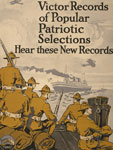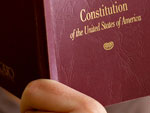Arkansas: 3rd-Grade Standards
-
AR.G. Strand / Content Standard: Geography
-
G.1. Standard / Student Learning Expectation: Physical and Spatial
Students shall develop an understanding of the physical and spatial characteristics and applications of geography.
-
G.1.3.1. Student Learning Expectation / Benchmark: Location, Place, and Region
Define absolute location.
-
G.1.3.2. Student Learning Expectation / Benchmark: Location, Place, and Region
Name and locate the states that border Arkansas.
-
G.1.3.3. Student Learning Expectation / Benchmark: Location, Place, and Region
Discuss the characteristics that define a region: takes up area, has boundaries, and has special features.
-
G.1.3.4. Student Learning Expectation / Benchmark: Location, Place, and Region
Identify on which continent and in which hemispheres the United States is located.
-
G.1.3.5. Student Learning Expectation / Benchmark: Location, Place, and Region
Identify the following using a globe or a map: Equator, Prime Meridian, North Pole, and South Pole.
-
G.1.3.6. Student Learning Expectation / Benchmark: Location, Place, and Region
Divide the earth into the four hemispheres using a map or globe: northern, southern, eastern, and western.
-
G.1.3.7. Student Learning Expectation / Benchmark: Location, Place, and Region
Identify the seven continents.
-
G.1.3.8. Student Learning Expectation / Benchmark: Location, Place, and Region
Locate mountain ranges in Arkansas: Ozark and Ouachita.
-
G.1.3.9. Student Learning Expectation / Benchmark: Location, Place, and Region
Locate major rivers in Arkansas: Arkansas, Mississippi, Red, White, Ouachita, and St. Francis.
-
G.1.3.10. Student Learning Expectation / Benchmark: Location, Place, and Region
Describe how seasonal weather changes affect the environment.
-
G.1.3.11. Student Learning Expectation / Benchmark: Map and Globe Skills
Explain the purpose of a physical map.
-
G.1.3.12. Student Learning Expectation / Benchmark: Map and Globe Skills
Utilize the map key/legend to interpret physical maps.
-
G.1.3.13. Student Learning Expectation / Benchmark: Map and Globe Skills
Locate places on contemporary maps using cardinal and intermediate directions, map scales, legends, and titles.
-
G.1.3.14. Student Learning Expectation / Benchmark: Map and Globe Skills
Label physical features on maps and globes: rivers, lakes, oceans, mountains, islands, desert, coast, peninsula, plain, and plateau.
-
G.1.3.15. Student Learning Expectation / Benchmark: Map and Globe Skills
Create a physical map that includes the following: title, compass rose, and legend/key.
-
-
G.2. Standard / Student Learning Expectation: Culture and Diversity
Students shall develop an understanding of how cultures around the world develop and change.
-
G.2.3.1. Student Learning Expectation / Benchmark: Culture and Diversity
Discuss several customs in the United States and tell how they originated (e.g., greetings, fireworks, parades).
-
G.2.3.2. Student Learning Expectation / Benchmark: Culture and Diversity
Identify cultural traits of ethnic groups that live in Arkansas.
-
G.2.3.3. Student Learning Expectation / Benchmark: Culture and Diversity
Identify reasons people live in rural, urban, and suburban areas.
-
G.2.3.4. Student Learning Expectation / Benchmark: Culture and Diversity
Compare and contrast the human characteristics of early settlements and contemporary communities in Arkansas.
-
-
G.3. Standard / Student Learning Expectation: Interaction of People and the Environment
Students shall develop an understanding of the interactions between people and their environment.
-
G.3.3.1. Student Learning Expectation / Benchmark: Movement
Discuss different types of transportation and communication links between communities.
-
G.3.3.2. Student Learning Expectation / Benchmark: Movement
Describe human settlements (e.g., cities, towns, communities, villages).
-
G.3.3.3. Student Learning Expectation / Benchmark: Human Environment Interaction
Describe how people affect and alter their environment (e.g., farming, building dams, environmental lighting, irrigation, pit mining).
-
G.3.3.4. Student Learning Expectation / Benchmark: Human Environment Interaction
Discuss ways in which the school and community can improve the physical environment by practicing conservation.
-
-
-
AR.C. Strand / Content Standard: Civics
-
C.4. Standard / Student Learning Expectation: Government
Students shall develop an understanding of the forms and roles of government.
-
C.4.3.1. Student Learning Expectation / Benchmark: Forms and Roles of Government
Discuss why government is necessary at the local level.
-
C.4.3.2. Student Learning Expectation / Benchmark: Forms and Roles of Government
Describe responsibilities and services of local government (e.g., law enforcement, fire protection, public parks, public schools, roads).
-
C.4.3.3. Student Learning Expectation / Benchmark: Forms and Roles of Government
Identify the three levels of government: local, state, and federal.
-
C.4.3.4. Student Learning Expectation / Benchmark: Forms and Roles of Government
Identify the fundamental ideals of democracy (e.g., human rights, justice, common good, equal opportunity).
-
-
C.5. Standard / Student Learning Expectation: Citizenship
Students shall develop an understanding of how to participate, develop, and use the skills necessary for effective citizenship.
-
C.5.3.1. Student Learning Expectation / Benchmark: Roots of Democracy
Examine the significance of national symbols and the role they play in fostering effective citizenship (e.g., National Anthem, Liberty Bell, Pledge of Allegiance, American Flag, Statue of Liberty, United States Constitution).
-
C.5.3.2. Student Learning Expectation / Benchmark: Rights and Responsibilities of Citizens
Describe how citizens contribute to the improvement of a community (e.g., service projects, volunteerism).
-
C.5.3.3. Student Learning Expectation / Benchmark: Rights and Responsibilities of Citizens
Describe the election process.
-
C.5.3.4. Student Learning Expectation / Benchmark: Rights and Responsibilities of Citizens
Discuss the proper etiquette for the American flag.
-
-
-
AR.H. Strand / Content Standard: History
-
H.6. Standard / Student Learning Expectation: History
Students shall analyze significant ideas, events, and people in world, national, state, and local history and how they affect change over time.
-
H.6.3.1. Student Learning Expectation / Benchmark: Regionalism/ Nationalism
Research the history of the Arkansas state flag.
-
H.6.3.2. Student Learning Expectation / Benchmark: Regionalism and Nationalism
Examine historical people and events of Arkansas (e.g., Maya Angelou, Civil War, Civil Rights Movement).
-
H.6.3.3. Student Learning Expectation / Benchmark: Conflict and Consensus
Discuss that conflicts between countries can lead to war.
-
H.6.3.4. Student Learning Expectation / Benchmark: Conflict and Consensus
Discuss the meaning of revolution.
-
H.6.3.5. Student Learning Expectation / Benchmark: Conflict and Consensus
Discuss the meaning of civil war.
-
H.6.3.6. Student Learning Expectation / Benchmark: Conflict and Consensus
Recognize individuals who contributed to the common good of society (e.g., Rosa Parks, Susan B. Anthony, Cesar Chavez).
-
H.6.3.7. Student Learning Expectation / Benchmark: Continuity and Change
Analyze a timeline that illustrates selected historical events.
-
H.6.3.8. Student Learning Expectation / Benchmark: Continuity and Change
Compare artifacts from events in various periods of history.
-
H.6.3.9. Student Learning Expectation / Benchmark: Continuity and Change
Identify ways in which technology has changed the world (e.g., computers, fax machines, cell phones).
-
H.6.3.10. Student Learning Expectation / Benchmark: Continuity and Change
Examine land development and its impact on a community.
-
H.6.3.11. Student Learning Expectation / Benchmark: Continuity and Change
Identify Jamestown as the first permanent American settlement.
-
H.6.3.12. Student Learning Expectation / Benchmark: Continuity and Change
Discuss John Smith's role and influence in the establishment of a self-sufficient settlement in Jamestown.
-
H.6.3.13. Student Learning Expectation / Benchmark: Continuity and Change
Identify the causes for the establishment of the thirteen colonies (e.g., gold, tobacco, religion).
-
H.6.3.14. Student Learning Expectation / Benchmark: Continuity and Change
Describe the early American Indian cultures in Arkansas.
-
H.6.3.15. Student Learning Expectation / Benchmark: Continuity and Change
Identify the modes of transportation in westward movement (e.g., wagons, horses, railroads).
-
H.6.3.16. Student Learning Expectation / Benchmark: Movement
Identify the following explorers: Hernando Desoto, La Salle/De Tonti, and Marquette/Joliet.
-
H.6.3.17. Student Learning Expectation / Benchmark: Movement
Identify the factors leading to the purchase of Louisiana.
-
H.6.3.18. Student Learning Expectation / Benchmark: Movement
Recognize that Arkansas was part of the Louisiana Purchase.
-
H.6.3.19. Student Learning Expectation / Benchmark: Cultural Diversity and Uniformity
Identify similarities and differences among the American Indians and Pilgrims: housing, clothing, foods, traditions, and tools.
-
-
-
AR.E. Strand / Content Standard: Economics
-
E.7. Standard / Student Learning Expectation: Choices
Students shall analyze the costs and benefits of making economic choices.
-
E.7.3.1. Student Learning Expectation / Benchmark: Costs and Benefits
Determine that people make trade offs to get the most benefit from scarce resources.
-
E.7.3.2. Student Learning Expectation / Benchmark: Costs and Benefits
Evaluate examples from the local community that illustrate scarcity.
-
E.7.3.3. Student Learning Expectation / Benchmark: Costs and Benefits
Recognize that stating the problem and listing the alternatives are part of the decision making model.
-
-
E.8. Standard / Student Learning Expectation: Resources
Students shall evaluate the use and allocation of human, natural, and capital resources.
-
E.8.3.1. Student Learning Expectation / Benchmark: Factors of Production
Discuss human capital.
-
E.8.3.2. Student Learning Expectation / Benchmark: Factors of Production
Recognize ways people become more skillful in the workplace.
-
E.8.3.3. Student Learning Expectation / Benchmark: Factors of Production
Recognize the product associated with the natural resources from which it is created.
-
E.8.3.4. Student Learning Expectation / Benchmark: Factors of Production
Explain how capital resources are related to specific jobs.
-
E.8.3.5. Student Learning Expectation / Benchmark: Factors of Production
Define and discuss characteristics of an entrepreneur.
-
E.8.3.6. Student Learning Expectation / Benchmark: Factors of Production
Define profit.
-
-
E.9. Standard / Student Learning Expectation: Markets
Students shall analyze the exchange of goods and services and the roles of governments, businesses, and individuals in the market place.
-
E.9.3.1. Student Learning Expectation / Benchmark: Financial Markets
Research items that represented money throughout time (e.g., shells, beads, pelts).
-
E.9.3.2. Student Learning Expectation / Benchmark: Financial Markets
List and explain the functions of money: medium of exchange, measure of value, and store of value.
-
E.9.3.3. Student Learning Expectation / Benchmark: Financial Markets
Discuss costs and benefits of saving in a financial institution.
-
E.9.3.4. Student Learning Expectation / Benchmark: Goods and Services
Identify and explain the role of each productive resource in producing a good or service (e.g., school lunches).
-
E.9.3.5. Student Learning Expectation / Benchmark: Goods and Services
Research goods and services provided by markets in the local community.
-
E.9.3.6. Student Learning Expectation / Benchmark: Goods and Services
Describe the benefits of voluntary exchange (e.g., trade).
-
E.9.3.7. Student Learning Expectation / Benchmark: Goods and Services
Recognize the connection between specialization and interdependence.
-
E.9.3.8. Student Learning Expectation / Benchmark: Goods and Services
Define supply and demand.
-
E.9.3.9. Student Learning Expectation / Benchmark: Global Markets
Define import and export.
-
-





